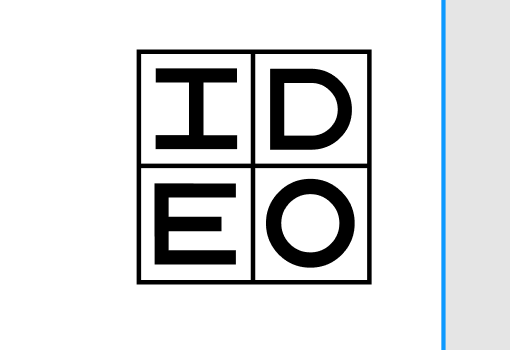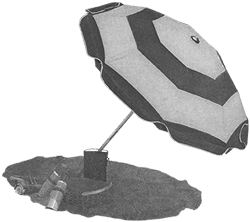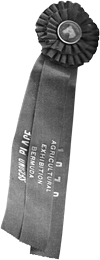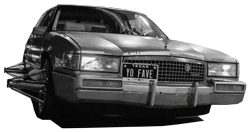We often frame professional burnout as a need to disengage. To step away from screens, quit a job, take a sabbatical, get your attention back. But what if the problem isn’t technology, productivity, responsibility, but the context in which we relate to them? What if the answer isn’t to disconnect, but to reframe?
I work in emerging technology at a design firm called IDEO. My days revolve around cutting-edge tools, sprint cycles, and, for the past few years, a daily stream of new AI tool releases. So when I tell people I spent a month carving marble in a remote Italian village with no Slack, no podcasts, and email only once a day, they assume I was on some kind of digital detox.
I didn’t go to Italy to escape technology. I went there to deepen my relationship with it.
What I found wasn’t peace or escape, but something more meaningful: a way to reclaim my attention without walking away from the tech I love. I didn’t need a break from technology or even from work. I needed to explore a different relationship to both.
That was what brought me to the Digital Stone Project, a month-long sculpture residency in the Garfagnana region of Italy. The program pairs traditional marble carving techniques with cutting-edge tools like VR and seven-axis robot arms. Around 20 artists and designers gather each June with one shared goal: To each make a single sculpture. One piece. One month.
While there, I gave all my attention to this project: designing and carving a sculpture that explored both the strengths and limitations of different technologies. VR allowed me to sketch complex gestures in 3D space; code defined precise geometries and rules; the robotic arm brought speed and precision to the rough passes of carving. But each had its flaws. VR lacked physicality; code was rigid; and even seven-axis robots couldn’t reach every surface.
My job was to mediate between the precise, but still rough, shape these technologies had produced and the smooth, curved surfaces that lay within the stone, only accessible by elbow grease.
At first, I was tentative, protective of the machine marks and unsure if I had the skills to improve on them. My comfort zone is planning, simulating, and testing to derisk the future. But here, risk was unavoidable, and every choice I made couldn't be command + Z’d away. My detailed plans got me to the starting form, but from that point forward, discovery had to happen through touch.
For the first week, I carved in silence, my full attention flowing from my mind through my hands into my tools and finally into the stone itself. I began noticing details I'd normally overlook. Moments of discovery emerged through concentration. Grinding away leftover material revealed that stone can be translucent, prompting me to replicate this delicate pattern elsewhere, creating a connective motif similar to the soft webbing between your thumb and forefinger.
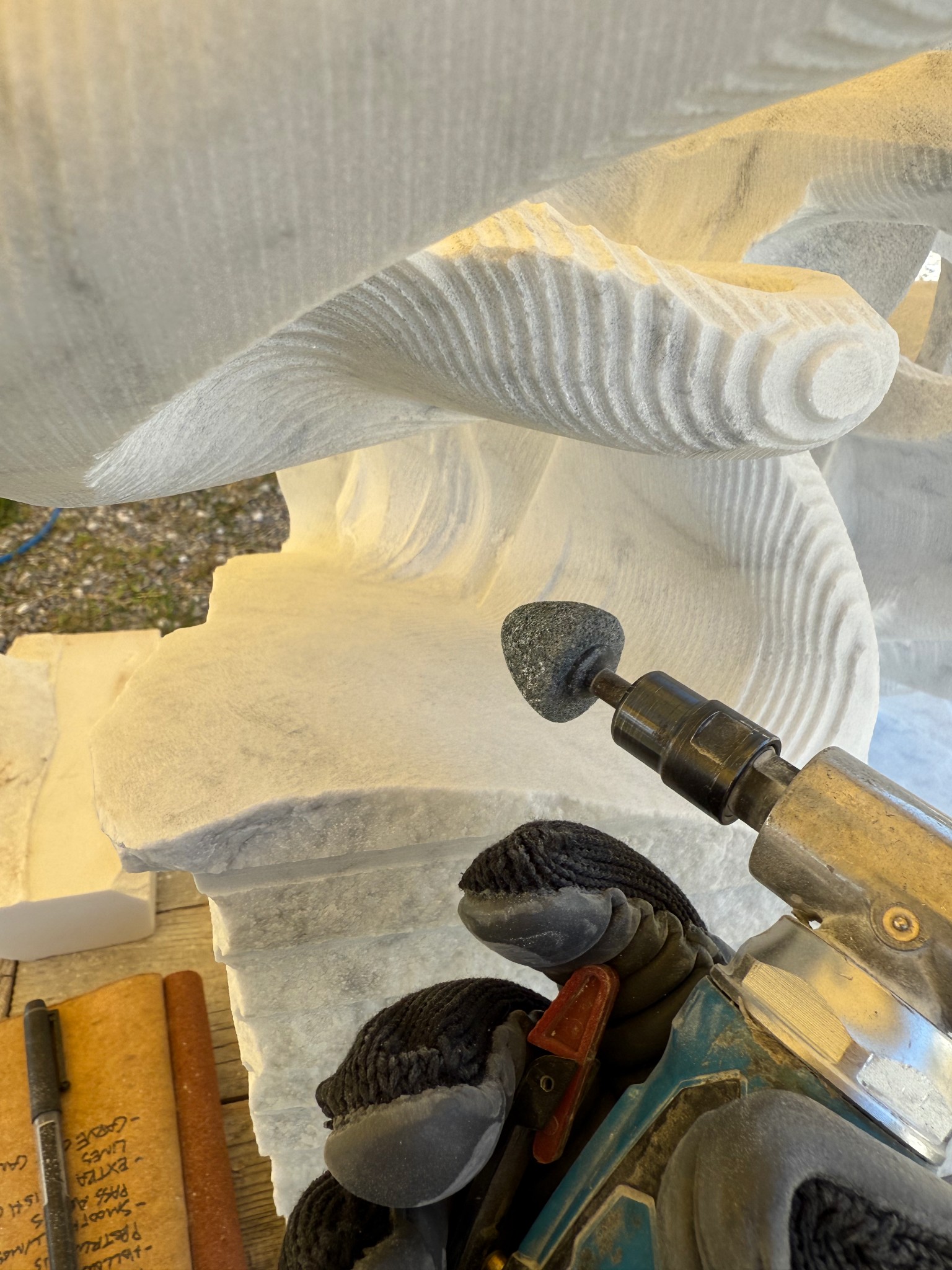
But mostly, I carved holes. Every morning I'd look from my stone to my 3D model, spotting places where stone could vanish. Carefully and slowly, I'd grind away. The moment just before breaking through became almost magical. The stone would become paper-thin, nearly transparent, until finally, a small chip broke loose, flooding sunlight through the gap. That precise instant shifted the geometry entirely, reshaping the sculpture and my attention along with it.
I had gone from someone with the fractured attention of a tech worker to someone who spent ten hours a day carefully shaping a 700-pound block of marble. It wasn’t willpower. It wasn’t desperation. It was context.

We often underestimate how much of ourselves are shaped by our surroundings. It’s easy to write off the feeling of clarity we find on vacation or in nature as temporary jet lag, nostalgia, novelty. But I believe we become different people in different contexts. Our attention, our identity, even our capabilities are not fixed traits. They’re relational, constructed.
The residency rewired everything—my environment, my routine, even the tempo of my thoughts. Mornings began with sunlight pouring over the mountains and through my open window. We shared breakfast, then walked to the stone yard where the air was thick with marble dust and the sound of grinders. Lunch was down a winding road at an outdoor café, followed by a siesta and more hours of carving. Evenings brought Italian lessons, quiet conversations, or stolen minutes to keep shaping the stone before dinner. Then sleep. Then sunrise. Then again.

This residency didn’t change my values. It clarified them. It helped me understand that my attention span isn’t gone. It made me realize it’s just crowded. It helped me see that the ability to focus isn’t about heroic discipline, it’s about designing your environment to support the kind of thinking you want to do. And it reminded me that the hard things in life—burnout, fragmentation, disconnection—aren’t always internal failures. They’re often circumstantial. Change the conditions, and you can change yourself.
If you want to shift your relationship to your work, your creativity, your attention, don’t start by quitting everything. Start by designing a different context.
Exhibition
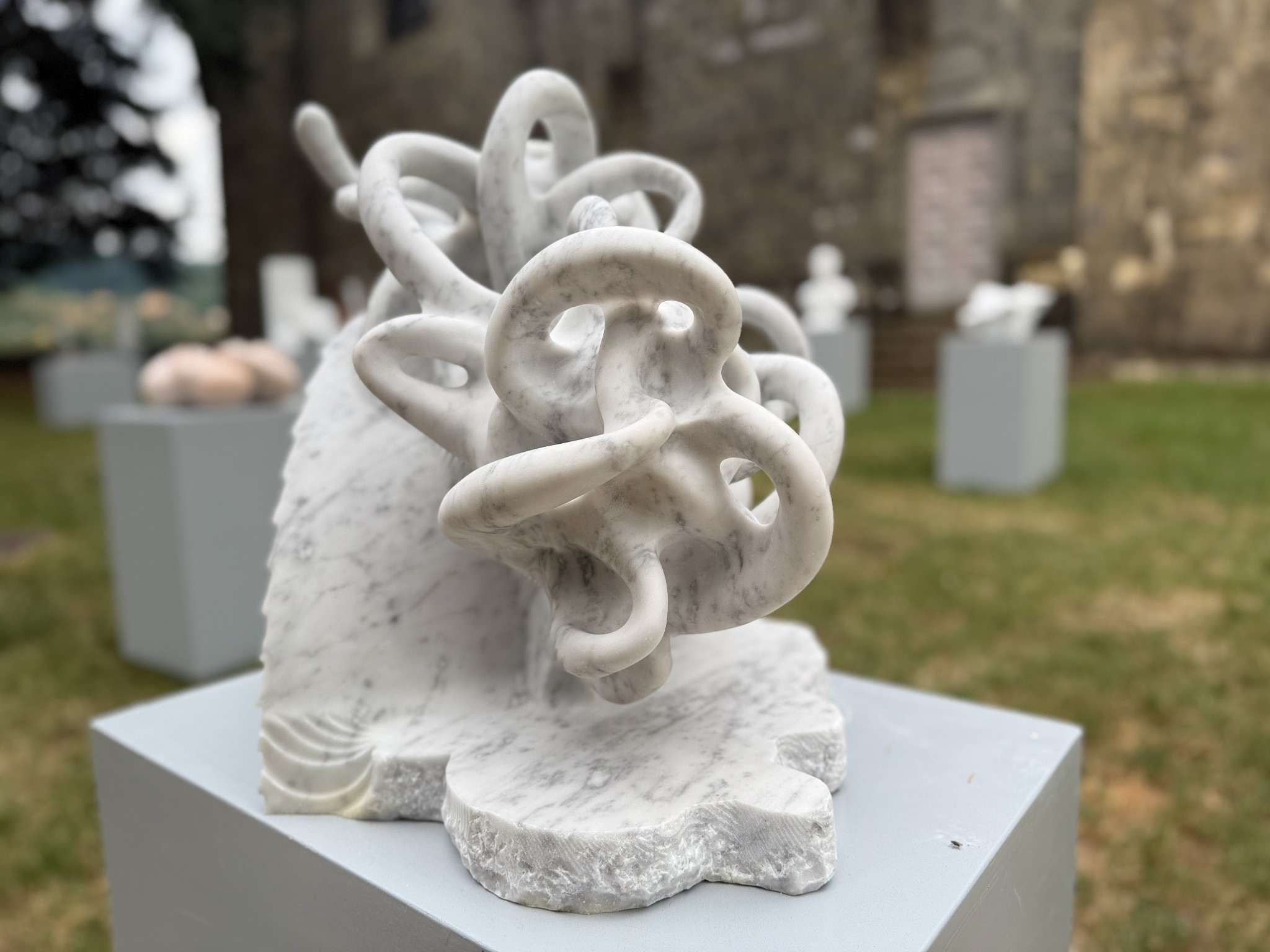

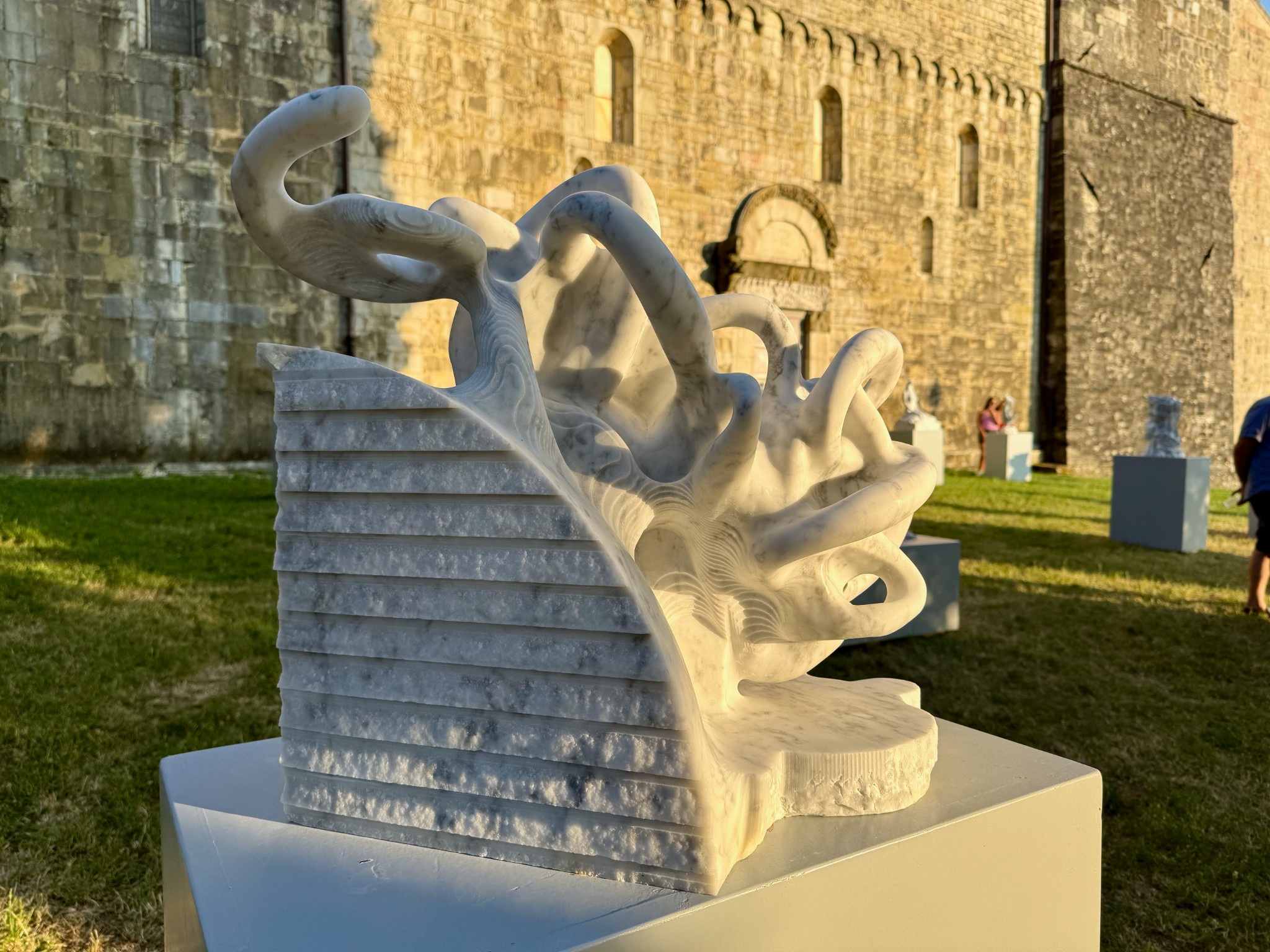
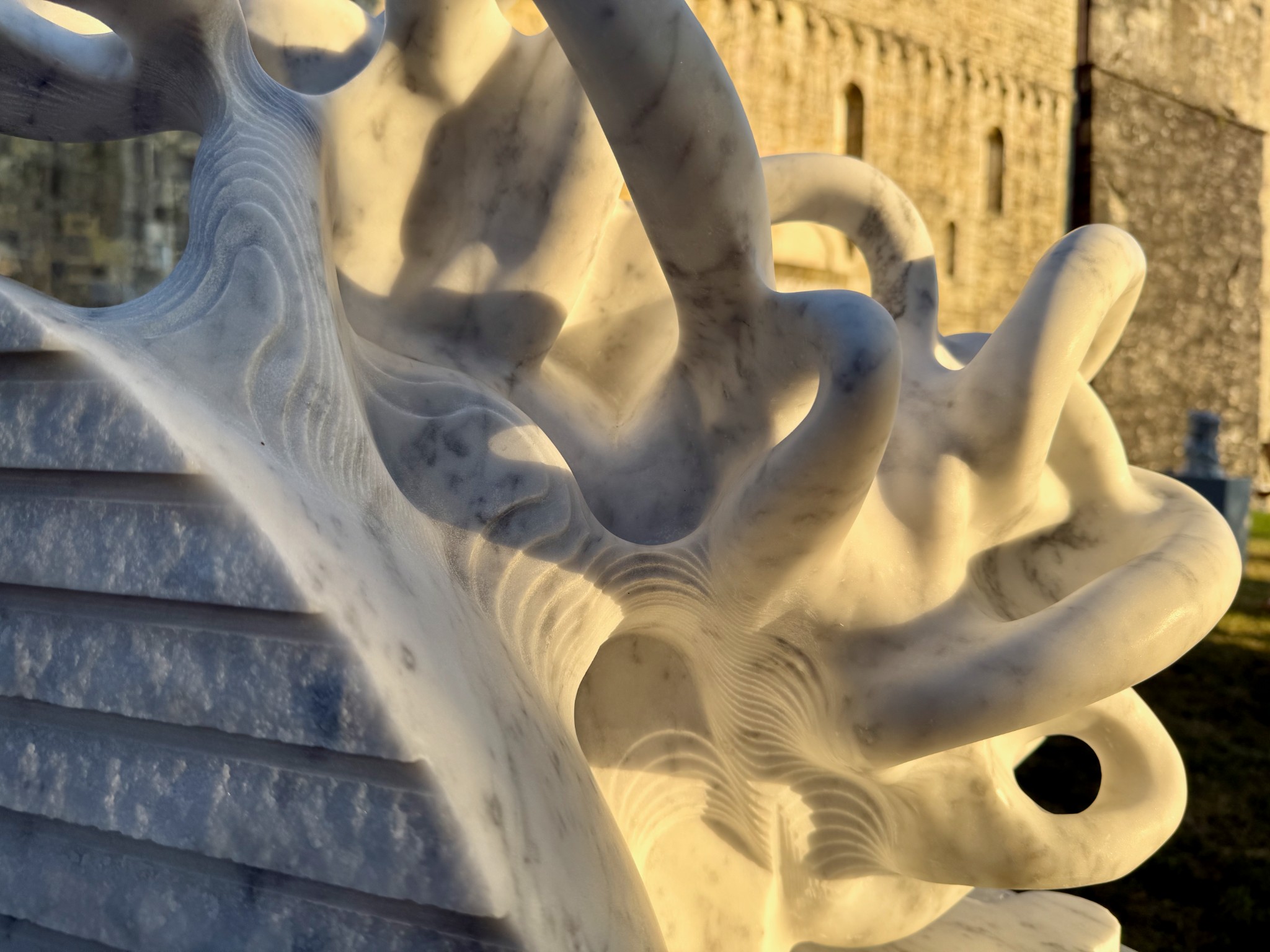
Heading 1
Heading 2
Heading 3
Heading 4
Heading 5
Heading 6
Lorem ipsum dolor sit amet, consectetur adipiscing elit, sed do eiusmod tempor incididunt ut labore et dolore magna aliqua. Ut enim ad minim veniam, quis nostrud exercitation ullamco laboris nisi ut aliquip ex ea commodo consequat. Duis aute irure dolor in reprehenderit in voluptate velit esse cillum dolore eu fugiat nulla pariatur.
Block quote
Ordered list
- Item 1
- Item 2
- Item 3
Unordered list
- Item A
- Item B
- Item C
Bold text
Emphasis
Superscript
Subscript
